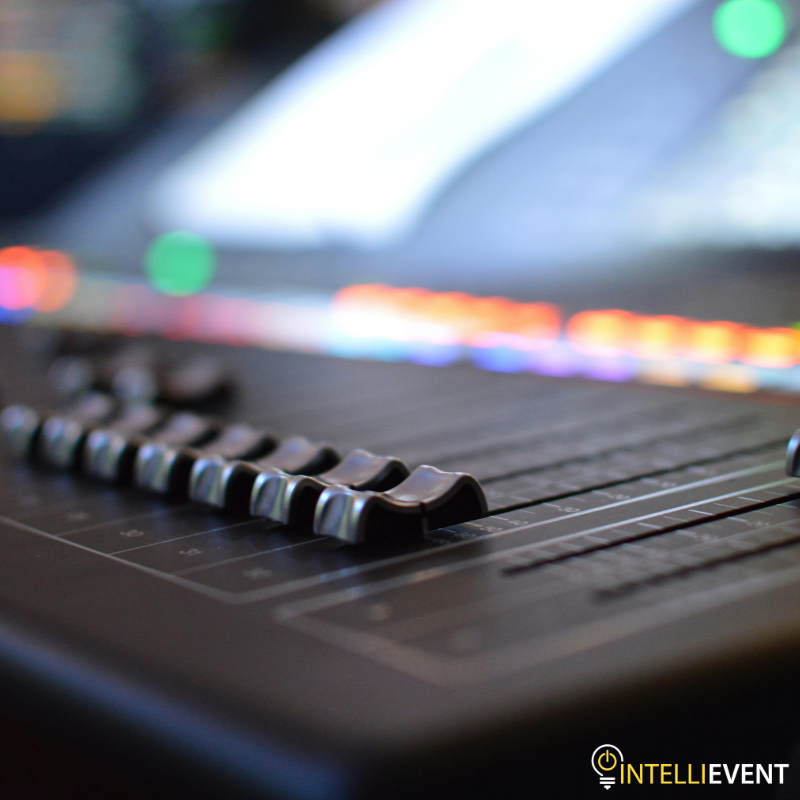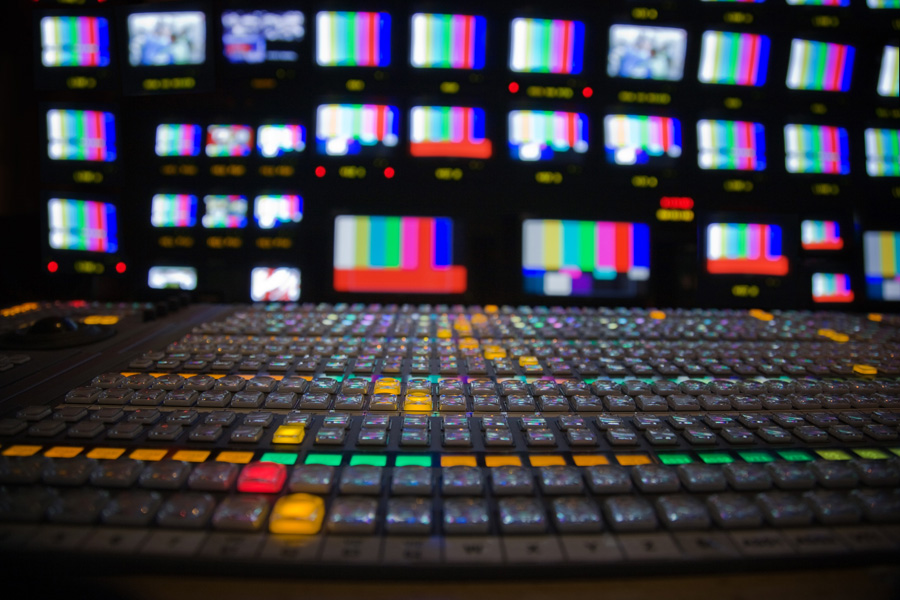The role of audio visual charlotte nc in modern events
Wiki Article
Comprehending the Addition of Audio Visual Technology in Today's Educational Environments
The assimilation of audio-visual innovation in instructional setups has actually transformed the training and finding out process. Educators currently have accessibility to devices that accommodate various discovering designs, enhancing pupil engagement and partnership. The incorporation of these modern technologies provides both chances and obstacles. Understanding how to efficiently execute these devices is vital. What strategies can instructors utilize to make the most of the benefits of audio-visual modern technology in their classrooms?The Development of Audio-Visual Technology in Education And Learning
As instructional demands progressed over the decades, audio-visual innovation went through considerable makeovers that reshaped the knowing setting. Initially, devices such as movie projectors and slide shows were the main methods of incorporating visual aspects into class. These very early modern technologies supplied educators with the capacity to present info dynamically, yet they were limited in accessibility and interactivity.With the advent of video clip cassette recorders in the 1970s, classrooms started to incorporate documented lessons, broadening the scope of instructional sources. The intro of personal computer systems in the 1980s additional revolutionized this landscape, enabling the production of multimedia discussions and interactive knowing experiences.
The increase of the net in the 1990s noted a turning point, enabling real-time access to a wealth of audio-visual materials. Today, digital tools such as interactive whiteboards and on-line discovering systems remain to enhance the academic experience, fostering interaction and collaboration among students.
Advantages of Audio-Visual Equipment for Diverse Understanding Styles
Audio-visual tools play an essential role in providing to diverse knowing styles by enhancing aesthetic learning and improving acoustic interaction. By integrating pictures, videos, and noise, these modern technologies create a more comprehensive academic setting. This diverse technique allows instructors to attend to the diverse choices and needs of pupils properly.Enhancing Visual Knowing
Interaction in the understanding process is considerably improved through the use of audio-visual devices, satisfying different finding out designs. These devices, such as video clips, infographics, and interactive discussions, give visual stimulations that aid comprehension and retention. Visual students, specifically, take advantage of the consolidation of images and computer animations, which can streamline complex concepts and boost understanding. In addition, audio-visual resources can show real-world applications, making finding out more pertinent and interesting. By incorporating color, activity, and audio, instructors can develop a vibrant understanding environment that catches pupils' interest and fosters much deeper cognitive connections. Eventually, the strategic use of audio-visual modern technology not only sustains aesthetic knowing yet also improves the overall academic experience for diverse students.Improving Auditory Involvement
A substantial advantage of including audio-visual devices in education and learning is their capacity to improve auditory interaction amongst pupils. These tools, which include multimedia presentations, podcasts, and interactive audio components, accommodate various learning designs, specifically benefiting acoustic learners (audio visual charlotte nc). By incorporating noise and narrative, instructors can create immersive experiences that capture trainees' interest and enhance comprehension. This involvement is necessary, as it fosters a much deeper understanding of the product and advertises retention. Additionally, audio-visual tools can facilitate collective discovering atmospheres, urging students to join conversations and share their understandings. Inevitably, the incorporation of audio-visual technology not just supports acoustic involvement but additionally improves the general educational experience, making discovering more vibrant and efficient for all pupilsEnhancing Engagement With Interactive Knowing

Gamification aspects, such as quizzes and simulations, can enhance inspiration and retention, making learning extra satisfying and effective. These methods not just stimulate cognitive interaction yet additionally accommodate varied knowing designs, ensuring that all pupils can participate meaningfully. Therefore, interactive learning atmospheres foster a feeling of area and belonging, inevitably causing enhanced scholastic end results. Through the combination of audio aesthetic innovation, educators can transform standard classrooms into dynamic areas where trainees grow and proactively form their instructional trips.
Linking Concept and Practice With Multimedia Resources
Multimedia resources function as an important link in between theoretical concepts and functional application in academic settings. By boosting engagement, helping with collective learning experiences, and sustaining diverse understanding styles, these devices produce a more comprehensive and vibrant understanding atmosphere - audio visual charlotte nc. This approach not only promotes deeper understanding but also prepares pupils for real-world obstacles
Enhancing Interaction With Multimedia
Involvement in instructional setups substantially boosts when teachers incorporate multimedia resources right into their teaching strategies. Using video clips, podcasts, and interactive discussions improves the learning experience, enabling trainees to get in touch with the product on numerous levels. Multimedia resources cater to different finding out designs, providing visual, auditory, and kinesthetic stimuli that can hold trainees' interest better than conventional lecture methods. In addition, these resources can streamline intricate concepts, making them much more accessible and memorable. By incorporating multimedia, teachers can create a dynamic class atmosphere that promotes curiosity and inspires students. Eventually, the strategic use audio-visual technology offers to connect the void between theoretical understanding and functional application, enriching the educational experience for both trainers and trainees.Assisting In Collaborative Understanding Experiences
Countless researches suggest that collective learning experiences markedly enhance student end results when integrated with multimedia sources. Multimedia tools facilitate interaction among students, allowing them to engage in analytical and vital thinking jointly. By using video conferencing, collaborative platforms, and interactive discussions, teachers produce environments conducive to teamwork and shared learning. These technologies make it possible for pupils to connect their ideas successfully and get instant feedback, fostering a much deeper understanding of the subject. On top of that, multimedia resources can present intricate ideas in more absorbable layouts, advertising conversation and partnership. Because of this, the combination of collective understanding and audio-visual technology not only improves the academic experience however additionally prepares students for real-world synergy characteristics, highlighting the importance of cooperation and cumulative understanding building and construction.Sustaining Diverse Learning Styles
While standard mentor methods frequently provide to a restricted range of discovering preferences, the integration of audio-visual innovation supplies a much more inclusive approach to education and learning. By using multimedia resources such as videos, interactive simulations, and electronic discussions, educators can deal with numerous finding out designs, including visual, auditory, and kinesthetic. This adaptability permits differentiated guideline, making it possible for students to involve with content in ways that resonate with their private choices. Additionally, audio-visual devices can facilitate deeper understanding by giving multiple depictions of complex ideas. Because of this, trainees who might fight with standard techniques can locate alternative paths to success, fostering a much more fair knowing setting that supports have a peek at this site scholastic success for all learners.Obstacles in Implementing Audio-Visual Technology
Audio-visual innovation holds excellent promise for improving instructional experiences, its implementation typically runs into substantial obstacles. One key concern is the monetary concern connected with getting and keeping such devices, which can stress budget plans, particularly in underfunded institutions. Furthermore, inadequate training for instructors can impede reliable combination, leaving them ill-prepared to use the innovation fully. Technical concerns, such as software program malfunctions and read the full info here compatibility problems, may likewise disrupt lessons and irritate both educators and trainees. Moreover, varying levels of trainee accessibility to technology outside the classroom can produce variations in discovering possibilities. Ultimately, the capacity for over-reliance on modern technology might interfere with crucial training approaches, ultimately restricting the instructional experience. Addressing these obstacles requires a comprehensive method, consisting of sufficient financing, expert advancement, and fair access to resources, to guarantee that audio-visual technology can be leveraged successfully in today's instructional setups.Best Practices for Integrating Technology in the Classroom

Additionally, fostering an interactive atmosphere via joint devices encourages pupil interaction and involvement. Using varied audio-visual sources deals with numerous learning designs, fitting aesthetic, acoustic, and kinesthetic learners. Regularly reviewing the influence of technology on pupil knowing assists teachers improve their techniques and adapt to changing needs. Ultimately, entailing pupils in the choice of innovation advertises possession and inspiration. By adhering to these finest techniques, instructors can develop a vibrant class environment that successfully incorporates innovation and boosts the educational experience for all pupils.
The Future of Audio-Visual Innovation in Education
As class increasingly accept modern technology, the landscape of audio-visual tools in education remains to evolve (audio visual charlotte nc). Future advancements are anticipated to focus on greater interactivity and customization, allowing teachers to customize discovering experiences to individual student demands. Developments such as increased reality (AR) and virtual truth (VIRTUAL REALITY) will likely provide immersive knowing atmospheres, enhancing trainee involvement and visit this site understanding
Additionally, expert system (AI) is poised to play a considerable duty in audio-visual innovation by providing real-time comments and adaptive learning pathways. This assimilation may help teachers identify and resolve trainee challenges better. Cloud-based systems will facilitate much easier accessibility to resources and cooperation among pupils and educators, regardless of location.
Along with these technological breakthroughs, expert development for educators will be important, ensuring they are geared up to make use of these tools properly. Generally, the future of audio-visual technology in education promises to produce more vibrant, comprehensive, and impactful knowing experiences.
Regularly Asked Inquiries
Exactly How Can Teachers Select the Right Audio-Visual Equipment for Their Class?
Selecting proper audio-visual devices calls for educators to assess their instructional goals, consider student needs, assess offered innovation, and seek referrals from peers or specialists, guaranteeing tools effectively enhance learning and interaction within their specific class atmosphere.What Budget plan Factors to consider Are There for Executing Audio-Visual Modern Technology?
Budget plan factors to consider for implementing audio-visual technology consist of preliminary purchase expenses, upkeep costs, training for personnel, and possible software licensing fees. Additionally, long-lasting investment in updates and replacements ought to also be factored into financial planning.Exist Details Training Resources for Teachers on Audio-Visual Devices?
Many establishments provide training sources for educators on audio-visual devices, including online training courses, workshops, and training guides. These sources intend to enhance instructors' abilities and self-confidence in efficiently incorporating innovation right into their mentor practices.Exactly how Do We Measure the Effectiveness of Audio-Visual Modern Technology in Knowing?
Gauging the effectiveness of audio-visual modern technology in learning entails assessing pupil interaction, comprehension, retention rates, and total academic efficiency. Studies, assessments, and observational researches can offer valuable insights right into its effect on instructional outcomes.What Are Usual False Impressions About Audio-Visual Modern Technology in Education?
Common mistaken beliefs about audio-visual innovation in education and learning include the belief that it assures interaction and learning results, as well as the assumption that all trainees benefit similarly, forgeting individual discovering preferences and demands.Report this wiki page